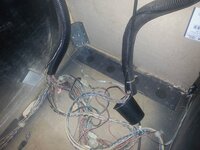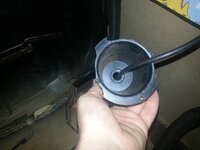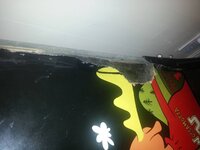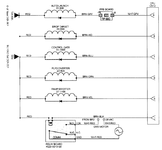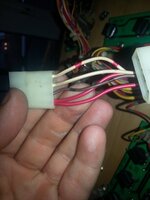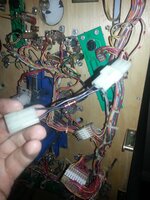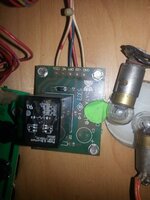The sheet of perspex I ordered arrived today. The good news is that 1.5mm is the perfect thickness, but as Rudi commented it's true to Perspex is much more brittle than PETG. In fact I did a couple of test cuts with my jigsaw and the very first one caused a crack to appear. Not good.
I used the Rocky plastic as a rough template and then overlaid my existing Lion over to top to modify it as required. The Lion has a straight bottom edge but the top right corner is clipped. Once i'd drawn the outline I very very carefully used the jigsaw to cut it to shape. Thankfully I managed to cut it without any major damage but i'm pretty sure the constant up and down is going to give it some severe hammer and it's most likely going to break eventually. No problems - it's just to prove the principal and i'll grab some 1.5mm PETG in the next week or two.
I then took my art work and printed it onto an acetate sheet before overlaying that on plain paper and carefully cutting out the image. It was a total pain in the **** trying to cut it out using scissors and the result is a bit rough around the edges. I'm going to invest in some scalpels I think for the next attempt.
Once i'd done that I used some selotape (yup, selotape) to fasten the image onto the perspex. It's obviously far from ideal but again it was only done as a test run. A few things i've learnt from this:
1. Use PETG not Perspex.
2. The colours for the printed Lion were out so I need to print a colour swatch and try to match the colours better. The main Lion was pretty close but the mane was more red than brown.
3. Get some scalpels to cut out the decal once printed.
4. Use a different material. One option is to print is as a water slide and transfer it over, but i'm leaning more towards adhesive backed vinyl like this:
http://www.ebay.co.uk/itm/WHITE-A4-...nter_Paper_Accessories_ET&hash=item1e70b6b67a
5. The sides of the PETG need to be finished with something (wet/dry maybe?) to give them a nice smooth finish. If anyone knows what is best to use here i'd love to hear more.
But on the whole I think the final result is a good start. At least I have something I can trial and i've learn some valuable lessons for the next run. I have considered using a company to print the decal as a Window Sticker but the issue I have with that is that it'll cost around £10 per print that I do so until i'm certain on colour registration and image dimensions then i'm a little reluctant to go that route. Possibly something for me to consider at a later date when i've got a little more ready money to spend.
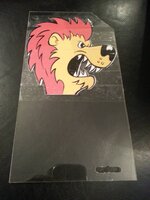
And reinstalled back in the machine.
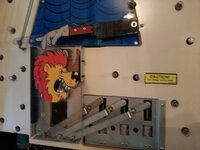
And finally a short video showing it running in test mode. Quite happy with my first crack at it - i'll probably grab the other bits I need in a week or twos time and give it another go. In the meantime I can test the durability of the perspex one i've made and it's a darn site better than having no Lion at all.
Also, note that Rocky seems a little reluctant to go back into the hat. I need to take a look at that and figure out what's going on. Could just be the plunger needs cleaning and the sleeves replacing. And finally apologies to anyone blinded by the stupidly bright flickering LEDs in that backlight. They were only installed as a test but they're definately not the right ones to be using there and they won't be staying.





